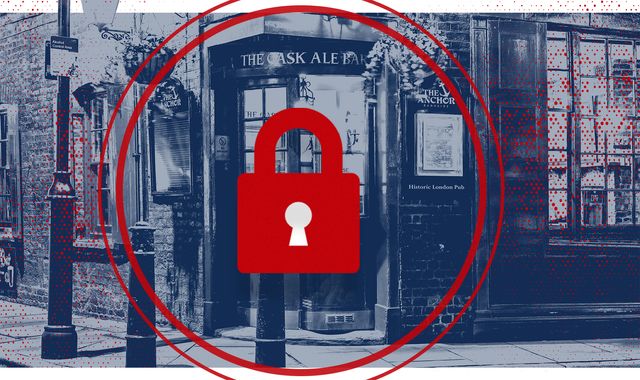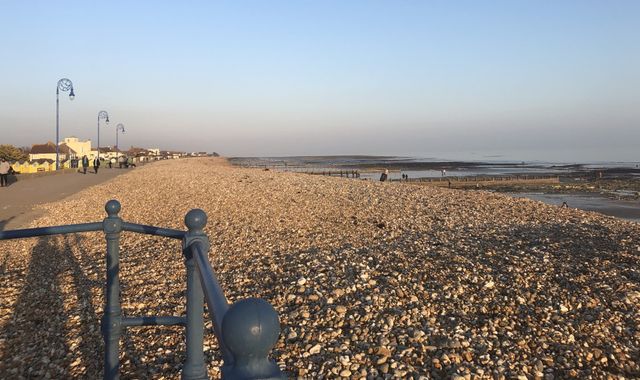COVID-19: How quickly will England’s lockdown end? These are the tests the PM’s roadmap must pass
Written by News on 22/02/2021
The prime minister will outline his roadmap on Monday for the path towards normality after England’s latest lockdown, with measures to be relaxed nationally rather than on the regional tiered basis of the past.

Downing Street has revealed four key tests which will be examined each step of the way, which are:
1. The vaccine deployment programme continues successfully.
2. Evidence shows vaccines are sufficiently effective in reducing hospitalisations and deaths in those vaccinated.
3. Infection rates do not risk a surge in hospitalisations which would put unsustainable pressure on the NHS.
4. Our assessment of the risks is not fundamentally changed by new “variants of concern”.
The government says the tests are currently being met, so the first step of the roadmap will begin on 8 March when schools reopen and some limited outdoor socialising is allowed once more.
But how must this progress be maintained? Sky News takes a closer look at what the PM and his team might be seeing when they examine each of these four tests.
The vaccine deployment:
This is one part of the coronavirus response that most people agree England (and the UK) has been able to do well.
Two jabs are in use so far (one from Pfizer, the other from AstraZeneca) and an army of volunteers and NHS professionals have vaccinated millions of people across the country since the first vaccine was approved at the beginning of December.
As at Sunday afternoon, more than 17.5 million people in the UK had received the first dose.
Two doses are required for best protection and only 615,000 people have got that far, so the government will want to be sure that the programme can deal with those due a second dose at the same time as the lower priority groups – and, later, the general public – are called up for their first dose.
The government has said it aims to have the top nine groups done by mid-April, including the over-50s, and then with every adult in the UK being offered their first dose by the end of July.
On Sunday, NHS England said more than two-thirds of people aged between 65 and 69 had their first dose just a week after invitations were sent and around 460,000 people aged 64 would now be called.
Vaccine effectiveness in reducing hospitalisations and deaths:
There are early signs that rates of hospital admission and death are falling faster amongst older groups who have received a first dose of the vaccine.
The charts below consider hospitalisations and deaths in England as a percentage of the latest peak. They compare the oldest age group to others.
In the last two weeks, the decline in both indicators has been slightly sharper for the older group. But it is unclear how much of the difference is driven by the vaccination or by behavioural patterns during lockdown.
In terms of deaths, another 215 were reported in the UK on Sunday – comfortably down from the 445 reported on Saturday and the 258 last Sunday. The numbers seem low but there is usually a lag in reporting over the weekend.
But it is a huge improvement on the bleak situation in January, when at one point more than 1,000 deaths a day were being reported.
At the same time, there have been positive signs from the two vaccines being used in the UK at the moment – Pfizer/BioNTech and Oxford/AstraZeneca.
In Israel, which has been a world leader in vaccinating its population thus far, a study showed the risk of illness fell by 95.8% after two doses of the Pfizer vaccine, that it was 98.9% effective in preventing hospitalisations and deaths, and that it was up to 85% effective after the first dose alone.
The AstraZeneca vaccine has shown a 67% reduction in positive COVID-19 swabs and an overall efficacy of 81% when the two jabs are three months apart, vindicating the UK’s strategy to hold of the second dose for 12 weeks.
The UK is also expecting its first batches of a third vaccine – this one from US firm Moderna – in the coming weeks.
Infection rates do not risk a surge that would renew pressure on the NHS:
One of the main reasons for the lockdown was always to minimise pressure on the NHS.
Hospitals were overwhelmed with COVID-19 patients earlier in the winter and now, as they start to recover, they face the daunting task of catching up with the treatment that was put on hold for non-COVID patients during the lockdown.
The last thing they need is another surge in COVID infections, which is one of the main reasons the government is treading so carefully.
While the PM’s lockdown roadmap is for England, UK-wide data is still a useful metric given that England makes up the vast majority of cases, deaths, hospitalisations and vaccinations.
In this latest wave, the seven-day average of new UK cases peaked on 1 January at more than 61,000.
As the number of infections increased, so did the number of people needing hospital treatment for COVID-19.
Two weeks later, on 18 January, the number of people in hospital peaked at more than 39, 000 and some hospital trusts said they were running at more than 100% capacity.
The chart below shows new UK cases and people in hospital as a percentage of the winter peak. And it is clear that the peak of patients in hospital follows 14 days after the peak for new infections.
NHS England chief executive Sir Simon Stevens has said that there are “early signs” that the vaccine rollout is contributing to the fall in coronavirus hospitalisations.
There were 1,149 COVID-19 patients admitted to hospital in England as reported on 18 February, with a total of 14,316 patients currently in hospital as of Saturday.
In the latter part of August and into September last year, that total daily number was down below 500, but it passed 34,000 in the second half of January.
The risk assessment is not changed by new variants:
Health Secretary Matt Hancock told Sky News on Sunday: “We’ve got to be vigilant because if one of these new variants doesn’t respond to the vaccine as well as the variant that is now the standard variant in the UK – the Kent variant…. then that’s obviously a very serious risk for the vaccination programme.
“We’re doing a lot of work to find out the impact of the vaccine on these new variants, especially the ones discovered in Brazil and South Africa, because clearly knowing the answer to that question is critical to understanding how much of a risk the new variants pose.
“But the good news is that the actions we’re taking right now do appear to be working.”
Mr Hancock is right to be watching this situation very closely. While those behind the current vaccines available have said they can handle the Kent variant, there is less certainty about the other variants and, of course, there is the possibility that a future variant could come along that leaves those vaccines powerless.
It really is a race between science and the virus.
Sky News will have live coverage of the prime minister’s address to the House of Commons at 3.30 and his Downing Street press conference at 7pm
(c) Sky News 2021: COVID-19: How quickly will England’s lockdown end? These are the tests the PM’s roadmap must pass







